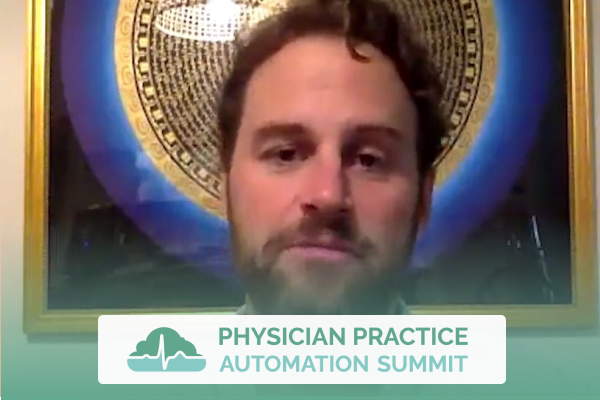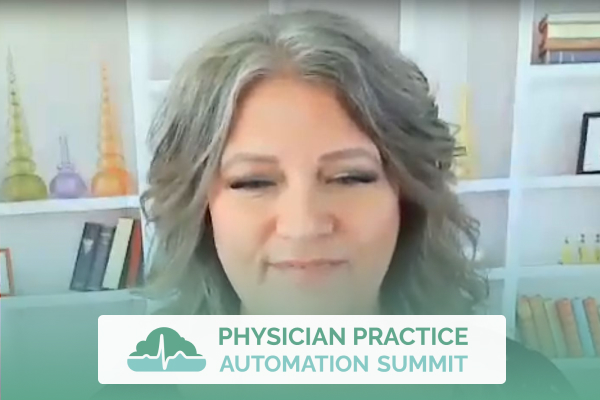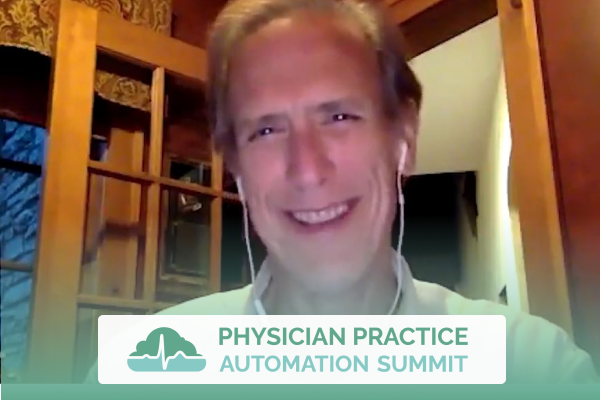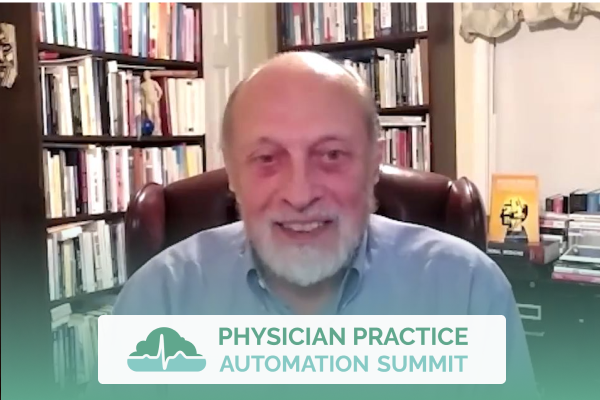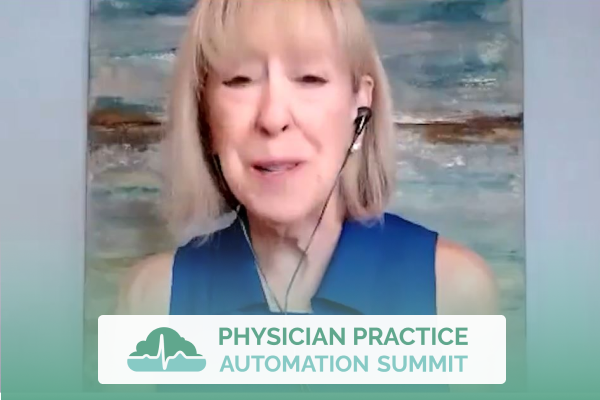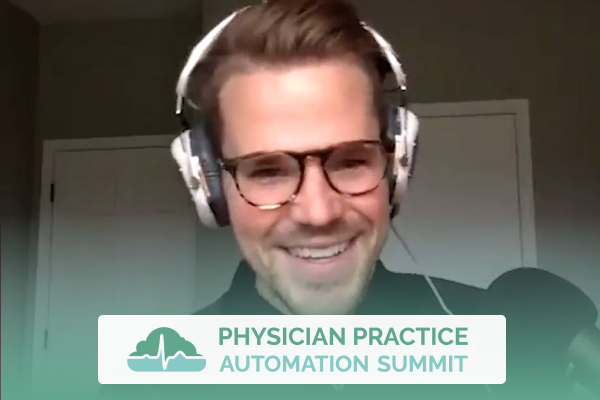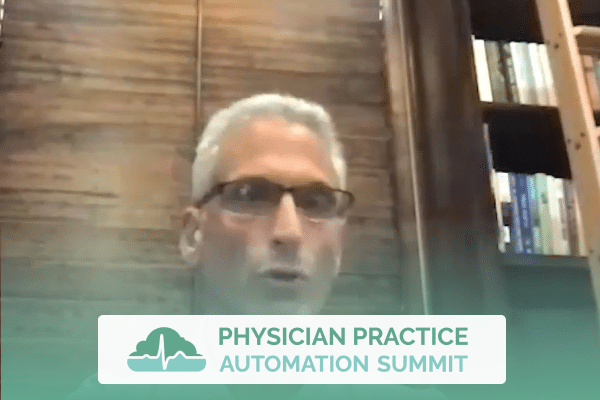Join the discussion below
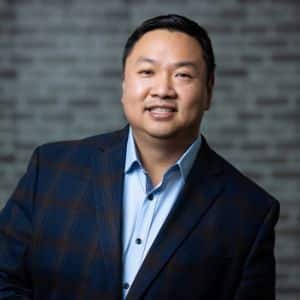
Dr. Ruan is the Founder and CEO of Texas Center for Lifestyle Medicine. He devotes his career in practicing and building systems that allow for efficient delivery of healthcare. He is a board certified internal medicine physician but also have advised with companies to improve their workflow, company culture, marketing,... Read More
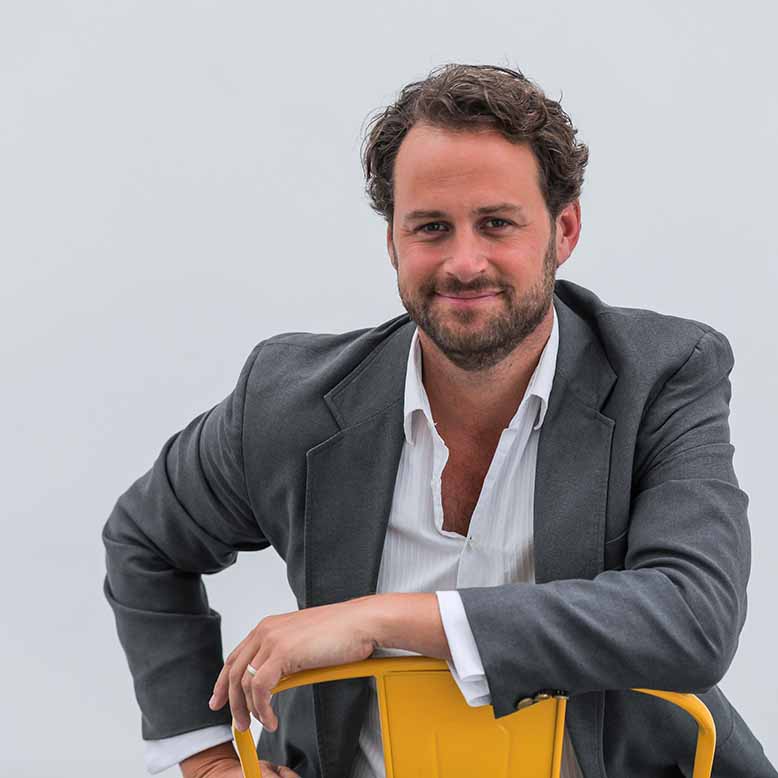
On a mission to flatten the curve of healthcare costs, James Maskell has spent the past decade innovating at the cross section of functional medicine and community. To that end, he created the Functional Forum, the world’s largest integrative medicine conference with record-setting participation online and growing physician communities around... Read More
Cheng-Huai Ruan, M.D.
All right everyone, we’re getting started. I have with me today someone super special to me, James Maskell. There’s not enough words to describe my friend here. He’s an author, speaker, podcaster, a great community builder and just a true down to earth healthcare entrepreneur, there’s no BS. And so I’m going to ask him some no BS questions today. And I have him on because he has a very unique viewpoint on healthcare in general but he’s also created something that’s super special. And so not only is he all those things, he wrote two fabulous books. One is called “The Community Cure”, which is great and the other one is “Evolution of Medicine”, which really focuses on a lot of the pain points of medicine. James, thanks for coming on today, I really appreciate having you.
James Maskell
Yeah, really excited to be here, Cheng. Thanks for having me and excited to get into this topic, which is super critical right now for people who are passionate about the transformation of healthcare.
Cheng-Huai Ruan, M.D.
Absolutely and so one of the things that we’ve talked about through the years and this is my daughter in the background, she’s playing around, we’ll just let her do her thing. One of the things that we talk about through the years is dealing with the health community and we know there’s rifts between the health community. And there’s doctors who are listening to you and I right now, who want to do well for the patients, who want to practice medicine in the way that they want to practice, in the way that we want to practice, right? What do you think are the main pain points that’s inhibiting a doctor from doing what they really want for a patient?
James Maskell
Yeah, it’s really interesting question. So, ultimately that my first book, “The Evolution of Medicine” really dived into that and was talking like, what is this gap that exists between the medicine that doctors want to practice and the medicine that they end up practicing can be significant. In order to like move out of that, you have to make some pretty significant changes to your practice and a lot of times that just is a big deal to make that jump. In that first book I talked about most doctors know that their patients aren’t doing the healthy behaviors, they are lonely, they’re not in a good position, they have lifestyle driven chronic illness, they know that the drug first approach isn’t working. But in order to change your practice that dramatically to focus on lifestyle, prevention, root cause resolution, it takes a lot to do that.
And ultimately whether or not you can do that depends on your life situation, whether you’re employed, whether you’re an entrepreneur, whether entrepreneurship is really something that you really want to get into or back into. And so there’s a lot of friction to practice in a way that you know that the patients need it. And so I’ve been looking for the last seven years to really address that friction in many different ways and it’s interesting that some of it can be done by physicians and physician entrepreneurs, but some of that friction is actually shifting in the healthcare landscape as well.
Cheng-Huai Ruan, M.D.
We talk about several different frictions here, but from the doctor’s standpoint, there’s not a whole lot of time. There’s not a whole lot of trying to figure out the intricacies behind administrative side within our practice. There’s insurance reimbursement issues and so healthcare becomes not necessarily a scalable model. And so what ways do you think are some ways that healthcare within a small to medium size private practice, can it be truly scalable?
James Maskell
Well, one of the things that we’ve seen and I started this in the first book and now see it with the second is if you can outsource, you should outsource. Years ago, everything that the physician did or all the production of the practice had to be delivered by the physician or like other practitioners that work for them. And there was a lot of moving pieces to manage. However, as technology started to improve, it started to be clear that you could outsource various aspects of your practice to third parties that were really good at that one particular thing. And therefore you didn’t have to do as many things as you thought you had to do and that led to the idea of the model which we call the “Functional Micro-practice”, which was essentially a medical practice that you could run off your laptop because you didn’t need as much stuff as you used to need to run a practice.
Now that has continued to evolve the technology for doctors, the different services. I mean, just think of something as simple as booking appointments. You used to have at least one person, if not two or three just to take the calls to book appointments but now with online scheduling, do you really even need that person in the office? Or do you need that many people? And that’s just one example of 50 that have come up. And so we’ve always been looking for scalable partnerships that allow the doctors to just do their thing and allow the whole practice to scale without necessarily having to take all the entrepreneurial risk and think through all of those different pieces yourself.
Cheng-Huai Ruan, M.D.
You know, when you say outsourcing it, it scares me a little bit because we’re all physicians, so we’ve been taught that we can do anything and that we should be doing things for our patients and for our practices. But honestly, a lot of doctors have been taking advantage of like companies who said they could do one thing, we try to outsource it and we get burned, myself included over the last few years. And so what are some of the things we should be looking for in a service that allows us to scale medicine ethically speaking?
James Maskell
Well, one of the things that I’ve been centrally involved with and I think the legacy that I want to leave for doctors is to actually introduce them to each other. We started the functional forum, we now have meetup groups around the functional forum all across the country and all across the world. And the reason why I think that’s important is because when doctors talk to each other, they can tell each other what works and what doesn’t. Ultimately people have an experience with a company and that’s the way everything else grows in the consumer market, word of mouth, but there wasn’t really ways in which doctors were talking to each other and so we can introduce those topics. If you can find high quality vendors that take one thing off your plate, then that can be a big deal. Let me just give one example.
Through the pandemic, many more doctors realizing, “Man, I should probably learn about vitamin D because it seems pretty critical to COVID outcomes.” And so when a doctor thinks, “Maybe I should have access, give my patients access to vitamin D”, then it’s like, “Am I going to have to have like a store in my office?” “Am I going to have to retrofit one of my rooms to have supplements?” “I don’t want to have a supplement store.” So you find a brand like Full Scripts, where essentially you could have access to all of these high quality supplements that are all vetted and ultimately you can prescribe it. There’s no cost to you to sign up, the technology works really well. That’s an example where you can take all of that off your hands and not only is it way more efficient than you could do it, but ultimately they have like a hundred people working on making it better all the time. If you view that one thing as an extension of your practice, then suddenly, you never have to think about it again, it does a lot of things that you couldn’t even do, even if you were thinking about it and ultimately allows you to add to the value of your care without actually having to take on any more risk or retrofit a room for being a package center.
Cheng-Huai Ruan, M.D.
And the idea here is to decrease risk or I call it de-risking ourselves for the lot of the business decisions that we have to make. We didn’t go to business school, we went to medical school for the most of us. And then we went into residency, went into training and the idea here is you go into practice, no one taught us how to do medicine. No one taught us how to provide a good, valuable service in the business setting, yet here we are. You mentioned earlier that you want to be able to use things like Full Scripts for example, where it’s consistent, it looks good, it makes the doctor look good and number one is provides value for Mr. and Mrs. So-and-So that’s sitting in front of me. And that’s the whole point of this summit is to upgrade on different technology because with technology, at least we know, you got dogs, I got kids, all good.
With technology, at least we know it’s consistent, but what we know it’s not consistent is human variations. And so if I have an employee here and he or she is doing X, Y, and Z, there’s not a consistency because this person is doing this thing his or her way. But I think consistency is what we’re really looking for in terms of a vendorship, so that we don’t let the patients down. And we don’t let our staff down because we know in private practice that our staff is our life. They come to us every day and if there’s staff turnover, it becomes a really hectic point as well. One is leveraging technology, two is leveraging consistency in the vendor program. And the third one is leveraging value in a way that we can scale.
And so let’s talk about the third one, for example. Medicine hasn’t changed in the last how many hundred years, thousand years. The one-to-one in-person physician visits is finally starting to shift. You have telemedicine and now you have these group visits, where instead of one-to-one, it’s sort of one to many. And a lot of doctors are very skittish about that. They’re like, I don’t know how to explain this. I know you’ve seen a lot of group visit models and we have that in our practice as well. Can you kind of explain the transition from one-to-one to one-to-many and then in-person to digital and what that looks like?
James Maskell
Yeah, absolutely. So the example I like to give for doctors is if you went to the meeting of the AMA in 1930 and you asked around and you said, “Hey, is alcoholism treatable? They would say, “No.” Once you have alcoholism, you’re done. You’re gonna have it for life and that’s because you can’t reverse alcoholism with drugs and doctors. But what they learned soon after that was that you could with groups, with empowerment, mentorship and accountability, you could actually facilitate people to not be alcoholic and that became Alcoholics Anonymous. If you look at chronic disease today, there are much more in common with alcoholism than getting hit by a car or get an infection.
And medicine was built on being hit by a car or getting the infection, that’s why you have the best diagnostician there at the beginning who calls the shots, the doctor, you go drugs first because it’s an acute situation, you need to get the situation under control. And if you use drugs in the right way, you save a lot of lives. But for type two diabetes and autoimmune disease and heart disease and these kinds of things, it doesn’t really fit the model. And so ultimately what I came to realize is that this group methodology, especially when it was like, if you take the group model and then you empower it with a lifestyle first root cause approach to health care that you’re trained in, that I’ve been very passionate about myself, you might call it integrative or functional medicine, that suddenly these groups become supercharged healing containers, where groups of people almost egg each other on to get healthy and actually do the healthy behaviors that everyone knows they should do, but not a lot of people are actually doing. And when I started to realize that, I realized that group visits had this incredible combination of being both more efficient.
It’s more efficient in terms of information delivery and the fact that the peers support each other, but also it could be more profitable for clinicians to do because you could see 17 people at the same time. And so I wrote a book called “The Community Cure”. You were featured in it because you were featured mainly in the “future” and then the chapter seven. And then if anyone wants a free copy of the book by the way, I can give you them the audiobook link if that’s okay, so that they can download and listen to it. If you go to thecommunitycure.com/audiobook, you can download it for free, you can download the audio and just get into it. And chapter seven, you’ll hear about Cheng’s clinic that I saw as the “future”. Well, that book came out in January 2020 and then suddenly the whole infrastructure of groups all across the country and all across the world was decimated. And that led to terrible outcomes in things like drug and alcohol recovery programs because people didn’t have that community and they didn’t react quickly enough to be able to build those kinds of things.
So that was the first issue, but ultimately what became in your book as what I saw as the future, which was virtual groups and remote patient monitoring, that decentralized community care, as soon as COVID hit, you and I were in conversation because that phrase was popping up here, there and everywhere while people were realizing why we need to keep people in their homes. So telemedicine is great but two, if we put these people in homes and can help them communicate with each other, we can really take a lot of the burden off the clinician, off the doctor that we’re being in some cases run ragged and in some cases bored out of their mind, depending on what kind of practice you had at the beginning of COVID.
Cheng-Huai Ruan, M.D.
You can reflect on that too because you’re absolutely right. When COVID first started, we switched from 5% telemedicine to 86% telemedicine pretty much within 48 hours. And I was freaking out, we have six clinicians in our practice. And so, we were actually doing group visits in person, they were going really well. We had group visits for autoimmune disease, for dementia, for diabetes, for metabolic disorders, you name it. So my health coaches were able to take care of these people as well as the doctors within the group sessions and things were actually going pretty well. We didn’t know how well they were actually going until it stopped. I think about I want to say three months into the pandemic where people were begging to come to the clinic to be in these groups again because that connection allowed them so much peace.
And what we’re noticing is that you’re right, people’s lab work were getting worse, rates of hospitalizations are increasing because we aren’t able to accommodate for a lot of these people. And so we started doing virtual group visits and this is where CMS starts to make rulings that specific CPT codes could be done during virtual medicine. I’m like, “This is great.” We can provide that in the medical community, we could provide that in the private insurance community. And so when we started that people were starting to see how much they actually enjoyed being in a room. And the virtual room is not as good as in-person room, but they still enjoy the virtual room, but they were starting to see how much human connection impacted their disease. And not only do they see it, I think the rest of us saw it. We had the sort of “Aha” moment that we were doing something good. We’ve been doing group visits for a few years now but we realized the impact that we had towards the community was absolutely phenomenal.
When we started some of these virtual visits and I actually had help group visits for a vaccine education when the COVID vaccines came out and also nutritional education around COVID and stuff like that. And so on, people were so enamored by it and people were tuning in from literally all, we have patients from all over the country utilizing their insurance actually to be within this group visit. And then we finally understood that there’s definitely a power of scale here, only if there’s a nice structure to build it underneath. Now, I’ve been building this group structure, me and my team, we’ve been building this group session for three years to get to where it is right now. And so, until I found recently, you have been building something that is pretty special. And I want you to release to the world about what the special thing is. And understanding that what I think me and you created separately are actually pretty similar. And so I’m pretty excited about that. So I want you to share with us what you’ve been doing the last year.
James Maskell
If you take everything that we just talked about and mash it together, you see a couple of things. I’m a hundred percent committed that the model that we’re talking about here is the future of healthcare. It’s a new layer of care essentially that sits between people and the medical system that is these empowerment groups. And essentially in these empowerment groups, every single human in America needs to learn to take care of themselves and to do it in a supportive community, where they actually overcome whatever psychological, physical, or socioeconomic humps have stopped them from getting where they need to go. I’m a hundred percent committed to that. I think that is what needs to happen to control healthcare costs, to flatten the curve of healthcare costs and also to deliver an experience that people love in healthcare, where their time is honored and their needs are met and so I’m passionate about that.
At the same time, to come back to what we were saying, I don’t think that every clinician can do a Chang Ruan and like execute that themselves ’cause just like you said, in order to get that kind of thing working, there’s a lot of risks with these group visits because it’s an extra layer of organization. Part of the reason I think why doctors just shy away from a little bit is because they realized that it’s going to be complicated and they realize it’s a little bit out of their comfort zone and they realize they’re happy doing what they’re doing. And so what we’ve been building in the last year is essentially a service where we could become partners with clinicians of all varieties that bill insurance, where the doctor could prescribe an episode of virtual care, where that prescription could be executed by an extension of that team that happens to be our team, where the technology, the coaching, the prescription, the content, the delivery, the technology, the customer service is all being taken care of by a third party that only does that one thing.
And therefore is hyper-focused on making sure that the quality is there. And so like last summer, as soon as COVID hit really, I realized this is what I’m here to do on this planet right at this moment. And we did some things that we tested. And you mentioned something earlier, which is that the disadvantages of the virtual environment, there are actually also some advantages too. One, we’re really talking about environmental medicine. You get to be in people’s environment because they’re in their environment, which is an interesting opportunity for some vulnerability and trust. Also, when you come in virtually, you have an opportunity to actually have a lot more attention from the patients in between visits, because your relationship with them is already virtual. And if you send them a video the day after that group meeting, they’re going to watch that video. Whereas if you saw them in person, maybe they wouldn’t because it’s a different media. And so the first thing we did was to start to learn about delivering these groups.
We’ve done dozens of groups now and now we’re partnering with clinics all across the country to essentially deliver a 24 week episode of care that can be prescribed by a doctor is paid for by insurance and Medicare and essentially becomes a new revenue stream for doctors who needs to take no more training, go to no more expense, but they just end up with this incredible outsource service that helps their patients and it’s synergistic with the precision kind of either drugs or supplement work they’re already doing in that practice.
Cheng-Huai Ruan, M.D.
Well, most people who are watching this are thinking, is your structure also going to help doctor understand what CPT code needs to be built for these visits?
James Maskell
That’s one thing we’ve learned a lot from you Cheng in the last little while. And the exciting thing is that, the more that your technology improves, the more access you have to more codes. We build everything around the anchor and the anchor is your classic 99214. It’s the way that the American Association of Family Physicians recommends doing these groups. But once you have that structure of a monthly group, then you can layer in chronic care management where patients are suitable for that and you can tell that through the technology. You could layer in remote patient monitoring, you can lay in supplement prescription, those kinds of things, communication.
Ultimately, most doctors even though remote patient monitoring has been around for a couple of years, the percentage of doctors that can actually get any of that money is so low because it takes a lot to execute that. You know better than anyone what it takes to actually execute, to get people a continuous glucose monitor, to have someone monitoring it, to train everyone and do it right. That’s a tricky dance. And ultimately what we are able to do is to come in, be in partnership with clinic, take care of all of it ’cause we’ve got one technology platform that’s the same for all the clinicians and it helped them to access coding that they weren’t able to access if they were just plugging along in their own practice.
Cheng-Huai Ruan, M.D.
That’s great. I call it like building a concierge practice without patient paying concierge prices. I always thought of remote patient monitoring and chronic care management and now there’s transitional care management and principal care management in CMS that is allowing more of a predictability when it comes to recurrent revenue for clinicians who take care of the Medicare patients, as well as other insurances that reimburse for these, because there’s a subscription that kind of goes with it and that’s paid by the insurances. And I think the structures like these, they’re the future of medicine, man.
I agree with you on that one because how many times have I seen private practices close down during the pandemic? A lot. And we get emails wanting our practice to sop up and absorb different more rural zip codes, because we actually do telemedicine and we can establish these peoples with telemedicine during this time. And of course I don’t expect that law to hold out, that might change a little bit later on, but at this time is still certainly the case. And let’s talk about the deliverables. Like what is it that makes the patient want to be part of these groups and what are the deliverables? What is the value proposition here for the patient side?
James Maskell
So the main questions that we asked doctors to ask their patients are how has your social circle changed during the pandemic? Most people have become a lot more lonely, they’ve lost touch with a lot of people. All the people that touch points of people they used to have out in the community have gone away, take a bit to come back. Loneliness is the biggest driver of all cause mortality. That book that I wrote called “The Community Cure”, the first title was “A Cure For Loneliness” ’cause I really feel like what these groups are doing is taking care of the number one driver of chronic disease, which is loneliness, so that’s the first thing.
The second thing is asking patients, how are you doing with implementing the healthy behaviors? And again, this is something that is being done very poorly across America particularly and across the world now is because the environment is so unhealthy and it’s easy to go with the unhealthy choices, whether that’s unhealthy lifestyle choices because of TV or exercise or sleep is awful, or the food is a big one. All of these things, it’s easy to make unhealthy choices in our society. And so in order to sort of combat that and to be able to stay healthy in this unhealthy environment, we need each other. And the deliverable of what we’re talking about here is putting patients into a community where they can be supported to go through the transformation that they know they want to go through and ultimately this rests on coaching. And I know you’re a big fan of coaching and I know you’re talking about coaching all the way through the summit and there’s every reason to it. The best definition I’ve heard of coaching is it’s helping people to take action on their intentions. Because I think so many people have the intention to get healthy but they just don’t take action on it and that’s what coaching can do.
And so our groups are run by specially trained health coaches and they’re able then to help doctors to execute on the protocol of the doctor and what we’ve seen already. I’ve got a special announcement here today is that we have our first data back from these first 131 patients that came through the group. We’re seeing over 40% of patients have significant clinical outcomes in the areas of anxiety, depression, sleep and almost 50% in fatigue. Clinically validated outcomes that we’ve taken through and also ability to participate. And we’re always getting more and more interesting data all the time. If you’re a doctor that’s looking to deal with these kinds of things, it’s now a situation where if someone comes in and they have anxiety, you can either prescribe a drug, the continued income for you off that patient is basically just the visits, there’s no extra income for prescribing the drug or you can actually prescribe this 24 week group intervention that’s happening as an extension of your care. There’s revenue production for the clinic itself but also the outcomes are significantly better when you compare the number needed to treat for most anxiety drugs, it’s not as effective as one and two or two and five getting significant clinical benefit.
Cheng-Huai Ruan, M.D.
We’re no longer assuming this works but now we know this works because you have the first set of data back so that’s really great. Does that mean you’re going to continue getting data the more people you put in these sessions?
James Maskell
Absolutely, yeah, more robust data too. We’ve just uploaded into the system, all of the NIH validated metrics for mental health, because we just obvious that that was having a big impact. People told us in the like exit interviews, we did exit interviews with all those people to see like, what did you like about it? What can we improve? And we found that most people just wanted to continue, they felt like initially we did it as 12 weeks and they found they were just getting their feet under them. But one of the other big things that we found Cheng is that people ascribe just as much value to the other people in that group as to the coach or the “medical professionals”. And so ultimately what we started to do is find even more ways that people could engage with a progress partner or the slack like interface that people are communicating with, so they’re sending in pictures and comments and they’re supporting each other in different categories. So, it’s just continually improving as we went along.
Cheng-Huai Ruan, M.D.
That’s great and another question that people might have is is this going to be provider led? I’m actually going to answer that one, James for you because April 1st, 2021, a new taxonomy within the center for Medicare and Medicaid services came out. I can’t remember what the number is, but it doesn’t matter, you can Google it, but this taxonomy is designating health coaches. So, starting April, 2021, they were able to get their own providership numbers or NPI numbers, national provider IDs we call them the US here, which means two massive things that health coaches are no longer this sort of mystical thing that’s out there.
It’s actually recognized by the federal government, they have their own taxonomy ID. My practice, we actually adopted that taxonomy ID, so our original taxonomy is family practice and internal medicine which is primary care. So when we adopted the health coach taxonomy ID, we were not considered multispecialty. I thought that was the coolest thing in the world that on top of the health coaches and now we’re considered a multi-specialty practice and we’re actually billed under the health coaches NPI numbers, this is unheard of and this is not something that I thought happen for another five, six years, honestly. But the great people would have a national board and health wellness coaches did a really good job to lobby and pull us through. And then there’s going to be a healthcare health cost reimbursable code, probably coming up later in 2022 or early 2023 that we’re fighting for right now.
So is this a provider led? Well technically, yeah, because these are health coaches. Another thing that I want to bring up and you brought up such a great point, James, is that people are really invested with each other within the group and that is so true. Every time we do a group, there’s like magic within the energies within a group and each group is different. And there’s always connections that are there, ’cause people who tend to struggle together for a common purpose, they like to speak to each other. And that support you can’t create on a physician to patient level because the patient views the physician as a hero. But the patient views other members within the group as other people who have gone through them, maybe they view them as a guide. It’s very different relationships. But I can tell you that when we started doing the larger groups about two and a half years ago, we started doing larger groups. Initially we were doing five or six and then it turned to 10 to 15. So when we started in the larger groups, our number of Google reviews that are five-star reviews, just skyrocketed astronomically because we were now the safe place.
My practice turned into a safe place for patients to be. One of the most common Google reviews that’s in there is that I can actually go to my doctor’s office without the fear of being prescribed something. That’s pretty powerful, ain’t it? And so, this is totally not how I was trained in medical school residency but it brings so much passion for me to practice medicine now, whereas before it wasn’t as much so. Now in the digital age, now we have health coaches with their own taxonomy. Now we have systems like yours that’s able to go within a medical practice bring people in. And bring people in and take them under a structured set of programs. Then the responsibility goes to the patient, whether or not they want to participate in something like this. It’s new for them but the definition of group visits aren’t new.
The original definition of a group visit I actually read, it was in 1996 from the American Academy of Family Practice. And it talks about how group visits should be used within primary care and as the future of medicine. That was talked about in 1996. It’s recognized by AFP, it’s been recognized since then, but not a lot of people take action on it because James, it’s not how we’re trained. Doctors aren’t trained like this and I think it’s a big shame but we should be. I shouldn’t say doctors, everyone except like mental health professionals because psychiatrists and stuff like that, they’re very well-trained in group sessions and stuff like that. We’re really taking a pace from their chapter and thanks to the psychiatrists out there and say we should do these in groups. But now listen, it’s 2021, we are in the year of digitalized medicine. So there’s telemedicine, there’s tele groups and people respond very well to technology now.
I can tell you how many people over the age of 80, all of a sudden are really proficient with online platforms like Zoom and Microsoft classrooms and stuff like that all of a sudden since the pandemic. Because it was the only way they can actually connect and even access medicine. But healing from this process, healing from what has happened over the last couple of years, we really have to go in the direction of we know what people are wanting and we have to change what the physician actually means to the patient. Because for the last thousand years, the physician has been that one-to-one hero for the patient. But in reality, James, I think a physician, the word doctor comes from the word “to teach” in Latin. The physician should be the teacher. And the role of a teacher is very different than what the current role of a doctor really is. And what we know is that the government center for Medicare, Medicaid services, insurance companies already recognizes.
They’ve recognized that for years, over 15 years they recognized it. Now because of the pandemic, they’re finally making moves and actions to reimburse for it. So even in 2021, we had the biggest CPT code definition change ever since 1993 to allow for improvement in healthcare. Doctors spent less time documenting and more time with the patients. And now because the pandemic, there are structures that are there that allow us to practice medicine virtually. And then we have our health coach taxonomy that got adopted. I think right now it’s the perfect time in a very weird world where things are actually going our way and I’m pretty excited about that, that’s part of the reason why we’re holding this summit. Yes, it’s an AI upgrade somehow but it’s also just intelligence upgrade. We’ve got to be really intelligent in the way that we practice medicine, because this is truly a digital generation.
James Maskell
I think it’s really set the rules by which we can play and ultimately to play by those rules, it takes either an incredible amount of execution on behalf of the independent clinician to be able to plan, to execute, to use those coding. Otherwise you have to find a third party that can help you do it and ultimately we’re super excited to help any physician who wants to participate in this new participatory medicine that we’re talking about. How do you get patients engaged? Patient engagement is the next blockbuster drug and I think every doctor knows that an engaged patient always heads towards health. And ultimately, we’re excited to be on the front lines working with physicians to be able to engage with their patients into healthy behaviors and solve some of these really hard to solve conditions.
Cheng-Huai Ruan, M.D.
And James, this ain’t your first rodeo. You’ve been helping docs for many years. You hold these national forums, you fly all over to meet with these doctors. You hear all the pain points across the country of what docs are going through to practice medicine the way that they want to. And all that rolled into a ball and you start and you engineered what you currently have. What is it about you that, I mean, you’re not a physician, so what is it about you that truly makes you want to do this? What is your why in wanting to do this? You said earlier this is your calling, where did that come from?
James Maskell
I would say there’s a lot of things for it that led up to it. I grew up in a community, I grew up on a commune in England and South Africa, so this was like my weird commune world doing alternative medicine, just having it done to me. But when I was at university Cheng, I studied health economics. And I saw very clearly there that in my lifetime and certainly in our kids’ lifetimes, both the American economy and the UK economy will be completely decimated by the rise in chronic disease. And ultimately if we don’t do something about it today, our kids have no future. And ultimately that’s what drives me. I just had a new daughter, I got two daughters now, I had a COVID baby. But I realize now, I think we got a shot and the way that we can transform medicine is we have to get the very large part of the population to be self efficacious, to be able to take care of themselves, to be not on medication, to be just living a healthy life.
And that requires a significant transformation in the healthcare system. But ultimately I know there’s a lot of doctors out there that want to do it and with Heal Community, which is the name of the organization that I’m leading now, we’ve now worked out a way to facilitate this transformation for people so that they can start being in community together, it could be delivered no matter what happens in the outer world with the pandemic and we can really focus on giving people that layer of self-efficacy so they’re just healthy, they know how to be healthy and they’re helping other people to be healthy. That’s the transformation that we need.
Cheng-Huai Ruan, M.D.
Now that’s great. And so what makes you sure that this is the future, James?
James Maskell
Just seeing not only like, what’s amazing Cheng is this. So seeing someone go through a transformation, where now they understand how their body works, they understand how they should eat to keep themselves well, they’re doing new healthy routines but then they’re suddenly empowered to help other people. And there’s this exponential effect where one person gets healthy and other people look at them and say, “What happened?”, then there’s an exponential effect. And we need an exponential movement to solve this massive crisis ’cause we have an exponential cost increase. And so just seeing that people get inspired into their health and then they want to help other people, we’re going to find a way to turn that excitement from people who have become empowered, who realized that the health is in their hands to then go and inspire other people. And to me, that tells me that this is the cure for what ails us and the scope of the cure can match the scope of the problem.
Cheng-Huai Ruan, M.D.
Awesome, well great, James. I want to end it here with a closing question that I ask most people. What are three tips you have for doctors who really want to transform and scale their practice right now?
James Maskell
Would say, the first thing is to really take a moment outside of everything to think about what is the kind of care that you want it to deliver and take away all of the like perceived limitations and just say, what am I responsible to? Then you have to start to think about what will it take to get there. And so the third thing is to come on events like this and to look for proven strategies that can allow them to do it with a lot more ease. Like in my mind, the doctors should be focused on a couple of things. One is being the leader, leading from the front clinically and also in the practice and then doing the diagnostics. Everything else from that needs to be outsourced to someone, either someone in your team or another third party vendor. And I think that if you can find the vendors that can solve some of these critical components, then we’re in good shape. And I’m excited, I’m grateful to be here with so many leaders in the field and I think that this timing for this summit and this message couldn’t be more important.
Cheng-Huai Ruan, M.D.
And James, thank you so much for coming on, I appreciate it and hope everyone takes a minute and just like James says, just sit back and stand back and just think about where you really want to go. And that’s what I really did a few years ago before I started at Texas Center for Lifestyle medicine. James, how can people find you?
James Maskell
Check out healcommunity.com, which is the website of the company, healcommunity.com. I’m on Instagram, Mr. James Maskell, you can find me and send me a message on Instagram or [email protected] is my best email.
Cheng-Huai Ruan, M.D.
All right, thanks a lot, appreciate your time tonight.
James Maskell
All right, thanks Cheng.
Cheng-Huai Ruan, M.D.
Yeap, bye bye.
Downloads

